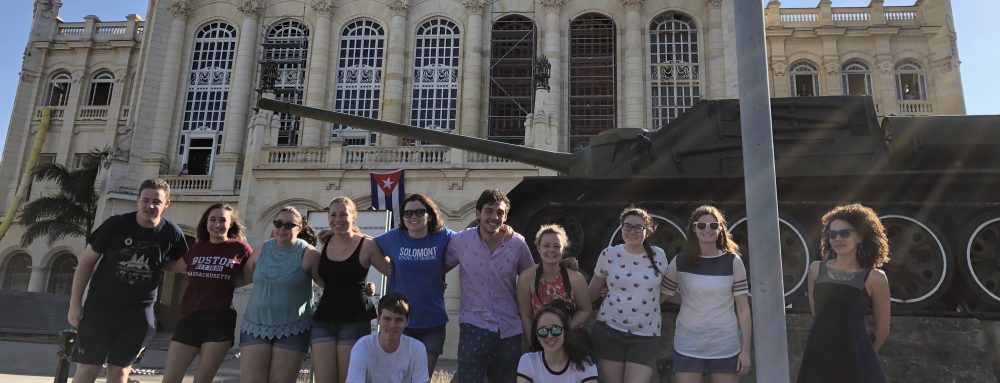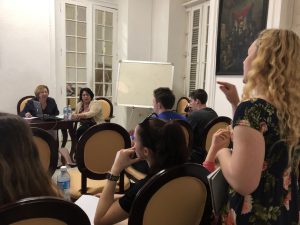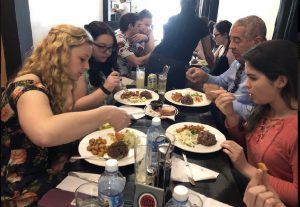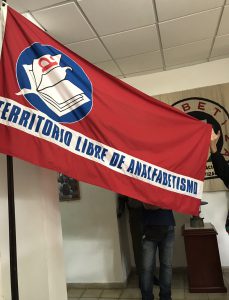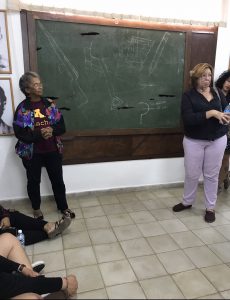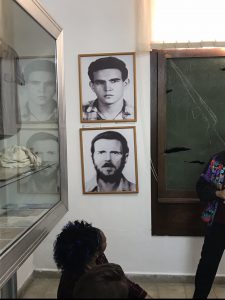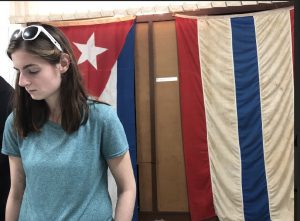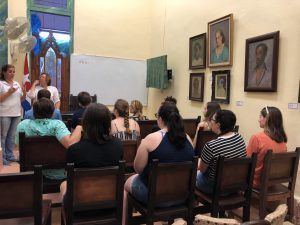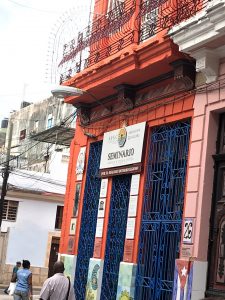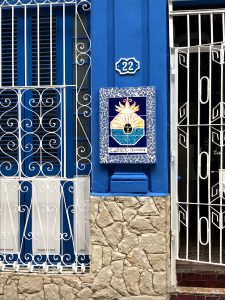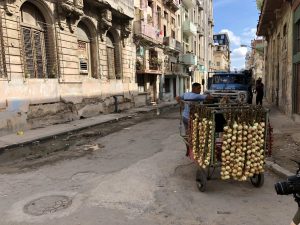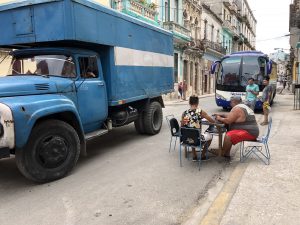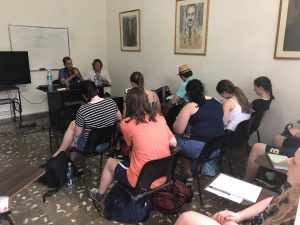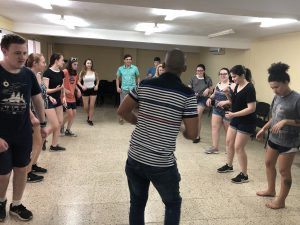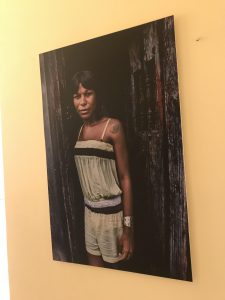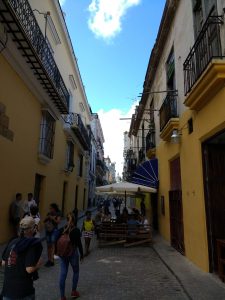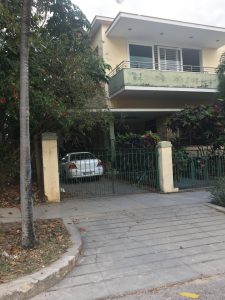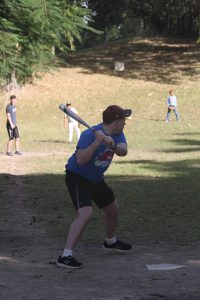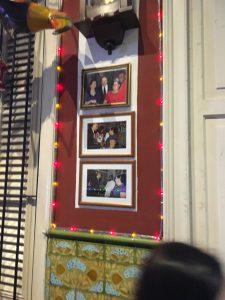Today, January 11th marks one full week in Cuba. As mentioned in the other blogs, so much has already happened, and we have seen so many different things. But today our lesson was focused on Cuban music. The professor, Ruben, made the class fun and interactive with all the different instruments we were able to use and play. Ruben taught us the history of the different music styles in Cuba, specifically the Punto, Rumba, Conga, Contradanza, Danzón, Mambo, Cha-cha-cha, and Son. In each particular genre/style we started with a brief explanation of its history and then immediately started using instruments to create our own music. We began with the clave (two sticks that are hit together), then added the güido (hollow gourd that you run a stick on the outside), then the maracas, and finally, Ruben would join on his guitar and sing along. Each time was incredible and so fun to hear. Sure, we were not always 100% successful, as some of the beats were weird and different than what we were used to in the United States. Following playing, we also learned the dances that went along with the particular music types. When it came to dancing, the musicality came naturally to some while others had a harder time. But, regardless, everyone enjoyed the dancing and had a fun time.


At lunch, we had a delicious Cuban feast (chicken, pork, beans, rice, and a salad, no tostones though so that was kind of sad). But at the restaurant, there was a group that played live music. This was a fun integration of what we had just learned with where we now found ourselves. The musical group was amazing, and a few students even got up and practiced the dance moves we had just learned. Our amazing bus driver, Arturo, helped those students dance along with the music.
Following the delicious food, we ventured to another municipality and toured a Health Clinic. The particular clinic we visited was a polyclinic, which meant it encompassed many different specialties (ie. dentistry, psychology, rehabilitation/physical therapy, and emergency services). Being an exercise physiology student, I was very excited to see the facility. Walking through the clinic was a surreal experience. In a way, it felt like I was transported back to the 1950s or 1960s and walking through a hospital in the United States. Obviously, the clinic had all the required machinery (beds, x-ray machines, lab stuff, etc.), but it all seemed dated compared to what I was used to. It really amazed me how to both the patients and the doctors, they were not hindered by the equipment they had.


Following the walkthrough, we all had a short question and answer session with the main doctor and nurse in charge at the clinic. Here we learned even more about not only the Cuban healthcare system but the clinic specifically. Firstly, and probably the most jarring for Americans, is that Cubans have free universal healthcare. Additionally, there are three different levels of doctors in Cuba. Primary being the doctor’s offices or clinics, secondary are the hospitals, and tertiary are specialized institutes. The clinic we went to was at the primary level and deals mostly with prevention and promotion. Also, one student asked about the gender differences in doctors. At the particular clinic we visited, there were more female doctors than male doctors, which is very interesting considering it is not like that here in the United States. Also, like every other developed country, children receive vaccinations. But unlike the United States with the small group of people who are anti-vaccine, people in Cuba vaccinate, as it is vital to living and saves lives. It was actually kind of funny since the nurse answering the question could hardly believe that such people existed.
On top of that, the two healthcare systems found in Cuba and the United States are polar opposites. In Cuba, it is slow, low-tech, free, but extremely good at ensuring no one slips through the cracks. But in the United States, healthcare is very high-tech but expensive which means a lot of the basics are not dealt with like they should be. But what is most surprising is that the United States has a higher infant mortality rates than Cuba. In the United States, it is 5.9 per 1000 live births, but in Cuba, it is 4. Somehow, despite their older and slower medical practices, Cuba is able to beat the richest country on earth.
But regardless of those specifics, it seems like the clinic was another example of Cuba’s time warp. In a way, Cuba has feet in both the past and the present. Its equipment was extremely dated, but its methods and procedures are modern. Just like with the music we learned in the morning, it has evolved from older styles, which are still known today, but continues to change and evolve over time, like so much else in the world.
